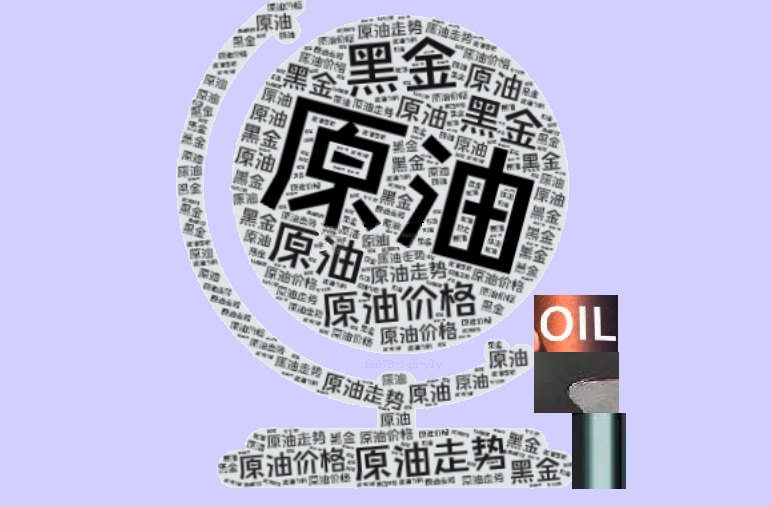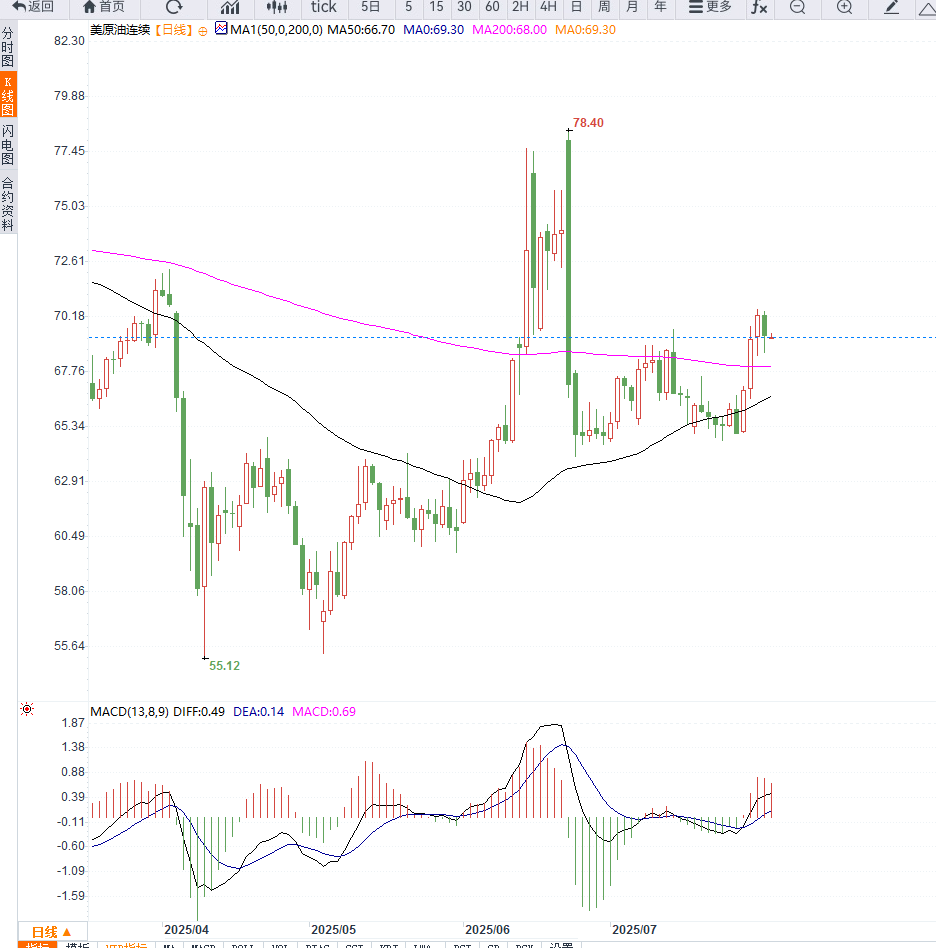Crude oil trading reminder: Supply-side concerns support oil prices, and they are expected to continue to rise after a short-term pullback.
2025-08-01 09:40:40
Despite little change on the day, oil prices still saw significant gains this week: Brent crude rose 4.9% and WTI rose 6.4%. The gains were largely driven by the US government's threat earlier this week to impose secondary sanctions on countries purchasing Russian crude oil, particularly in Asia, which sparked concerns about supply disruptions.
However, the market was more focused on Friday on the Trump administration's new tariff executive order, which imposes tariffs ranging from 10% to 41% on several trading partners, including Canada and India, and will take effect on August 1.

"If the new round of tariffs takes full effect, it may push up the prices of imported goods, thereby suppressing consumer spending and industrial activity, and putting pressure on oil demand," said a market research analyst.
In fact, US inflation has already shown initial signs of recovery. June data showed that overall US inflation rose as tariffs pushed up the prices of imported goods such as furniture and entertainment. This has intensified market expectations that the Federal Reserve may delay interest rate cuts in the second half of the year.
High interest rates will limit borrowing and investment, further slowing economic growth, which will also put downward pressure on the oil market.
Meanwhile, Trump's criticism of Asian countries for continuing to buy Russian oil has played a role in supporting oil prices. The market is worried that if secondary sanctions are implemented, Russia's 2.75 million barrels per day of seaborne oil exports may be affected.
"The Trump administration, like its predecessors, may find it highly unlikely to impose sanctions on the world's second-largest oil exporter, otherwise oil prices could surge significantly," JPMorgan Chase said in a report on Thursday, based on market research.
From a technical perspective, the daily chart of US WTI crude oil shows that the price is still in an upward channel, but the momentum has weakened. The price has remained above the 50-day moving average for several consecutive days, with short-term support around $68.50, which is also the upper edge of the previous consolidation platform.
If it falls below this level, it may trigger a pullback to the $66.80 area. The initial resistance above is $70.50. If it can effectively break through, it is expected to challenge the year's high of $72.20.
In terms of technical indicators, the shortening of the MACD red bar indicates weakening bullish momentum, while the RSI is in the upper neutral zone, suggesting a cautious bullish market sentiment. Overall, prices may remain range-bound in the short term, awaiting fundamentals to drive the direction.

Editor's opinion:
Uncertainty in global trade sentiment may provide short-term price support, particularly when energy geopolitical factors are involved. However, excessive policy action will exacerbate global market uncertainty and potentially dampen demand-side growth momentum.
The oil market is currently not driven by a single variable, but rather a complex game brought about by the intersection of multiple macro risks and policies. Volatility is expected to increase in the future.
- Risk Warning and Disclaimer
- The market involves risk, and trading may not be suitable for all investors. This article is for reference only and does not constitute personal investment advice, nor does it take into account certain users’ specific investment objectives, financial situation, or other needs. Any investment decisions made based on this information are at your own risk.





















